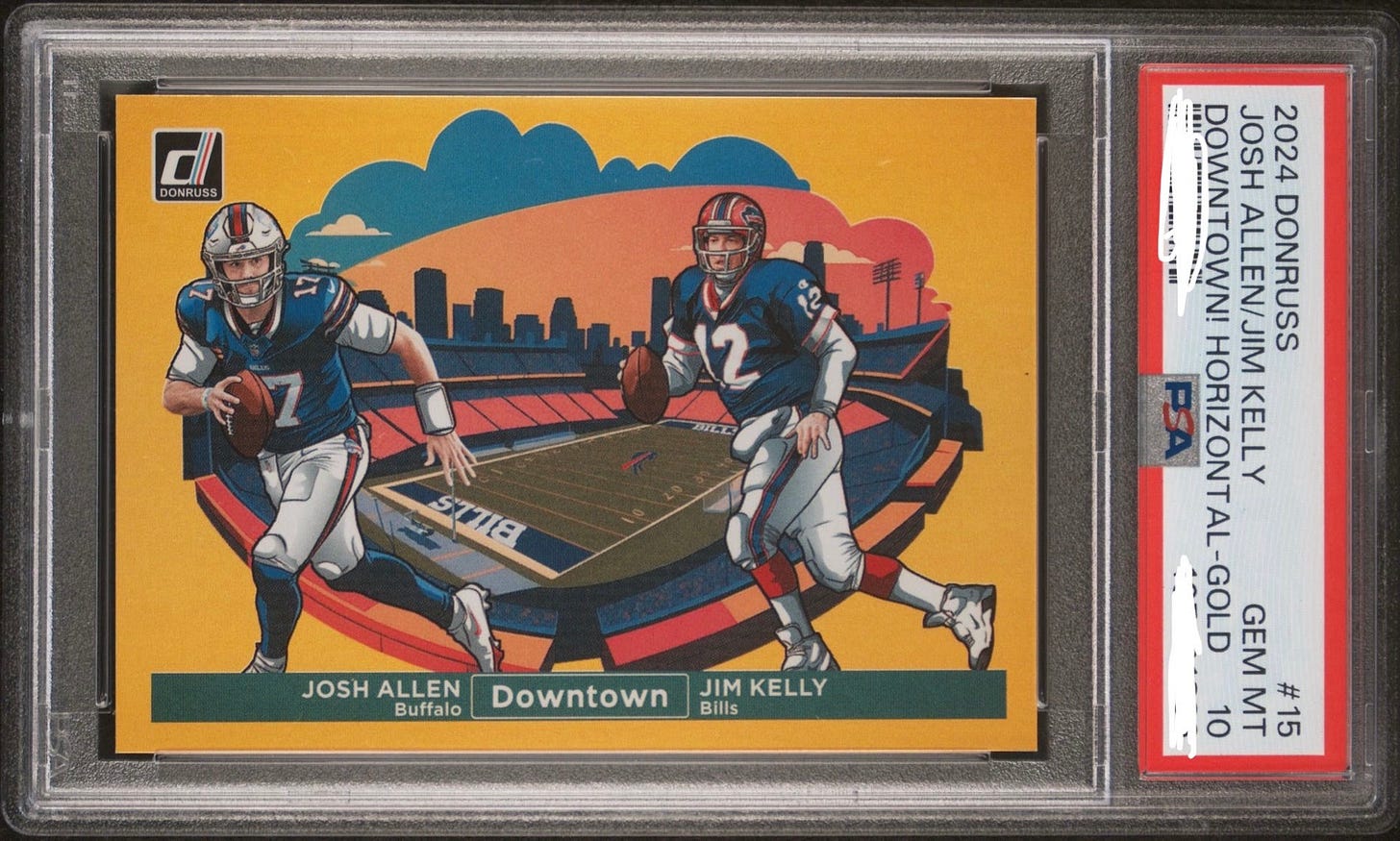It started as a curiosity. My son Alex had been diving deep into sports card collecting since 2020. Jon, my other son, was becoming more intrigued by the community aspect and they both invited me along to a card convention. I had no idea what I was walking into.
That day at the Capital City Card Convention felt like walking into a sports-stock-market hybrid. The excitement, the energy, the hustle. It wasn’t just about collecting cards anymore, it was about value, rarity, grading, branding, and strategy. The card tables were covered with high-value items and wheeling-and-dealing was happening at every corner.
From Hobby to Hustle
Alex started collecting during the pandemic. “I had nothing else to do,” he said. “I started watching breakers online rip boxes and it just drew me in.”
Breaking news: those folks you see opening packs on YouTube or live streams sell spots in advance. You might buy the rights to any Chiefs cards pulled in a box, for example. If they hit a rare Patrick Mahomes? It’s yours.
“But then I realized,” Alex said, “I was just stockpiling cards. I wasn’t doing anything with them. That’s when it shifted from a hobby to more of a business mindset.”
The Grading Game
Alex once pulled a dual downtown Josh Allen card so valuable he spent nearly $200 to have it graded by PSA, the industry’s gold standard. “It came back a 10,” he said, “which is a gem mint grade. But then PSA upcharged me because the card’s value increased due to the grade.”
That kind of thing isn’t uncommon in this world. PSA, Beckett, and SGC all have loyal followers, and grading adds huge value to a card, but only if the corners are crisp, the centering perfect, and the surface flawless.
A Personal Connection
Jon approaches the hobby differently. He collects cards of players he’s covered as a broadcaster. “It’s cool to get a Brock Purdy or a David Montgomery card,” he told me. “These are guys I’ve watched grow. It feels personal.”
He’s even looped his wife into the hobby. She’s aware of how much he’s spending—though not always thrilled. “You’ve gotta sell some of it to keep doing it,” Jon admits.
Kids, Cards, and Community
What struck me most at the convention were the kids. Little entrepreneurs, wheeling around cases of slabs and talking shop with adults. Negotiating, trading, selling.
“It’s good to learn negotiating skills,” Jon said. “But some kids just walk up and shout, ‘I want $25 for this!’ without doing any research.”
Alex jumped in: “They’re copying influencers. But they don’t see the hours those people put in behind the scenes.”
And that’s the theme that kept returning: community. “If it’s just a business,” Alex said, “you’ll burn out. But if you do it with friends, help each other land cool cards, trade stories, it becomes something special.”
Bubble Gum and Bike Spokes
We even ripped open a few packs during the podcast. And let me tell you, the joy came back fast. The smell of the wrappers. The surprise in pulling a recognizable name. The old-school feeling.
And yes, we talked about the gum. “They still have gum in some packs!” Alex told me. I was stunned. “That stuff used to taste like mint-flavored drywall,” I joked.
The Lesson in the Pack
This episode was more than just a nostalgia trip. It was a lesson in how industries evolve, how kids adapt, and how something simple, like a piece of cardboard, can bring people together.
Alex summed it up perfectly: “If you’re not building community or having fun, what’s the point? That’s the magic of this hobby.”
Listen to the conversation on Maxwell’s Iowa CoffeeCast!







